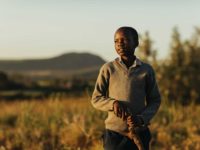Received from Ken Laura, a member of our Haiti Relief Team working in Port-au-Prince.
Sunday, April 25 — I moved last week and it has changed my situation and my perspective. Instead of sleeping in a tent beside the main road of Delmas listening to trucks roar up and down the street all night, I go to sleep seeing stars, and awaken to bird calls. Some of the birds are roosters, which start crowing at about 4:30, but other than that it is amazingly quiet here.
Whenever the power is out, usually from the morning until 10 p.m. there are very few lights in the area. Although the houses are a million dollars in size, they are only about $100,000 complete.
People do have mortgages here, but many build with the cash that they save from year to year and pay as they go. They don’t owe the bank interest, but they also have to wait a really long time to move into the house.
My new home is at the top of a steep hill in a very nice subdivision with a guard and pavement, mostly maintained. Some friends I’ve met are letting me stay as a courtesy.
The situation at the top of the hill makes the views incredible, I can see out to the bay to the northwest and out to the border to the east. The most amazing contrast is the 3,000-to 4,000-square-foot mansions in my neighborhood staring into the Internally Displaced Person (IDP) camps where people are sleeping in makeshift homes with U.S. AID tarpaulin sheets draped over flimsy wooden supports.
A new, “well designed” camp with terraced tent sites has just sprung up over the last week and already it is 25 percent full. The U.N. and other non-governmental organizations are trying to make life more tolerable for the hundreds of thousands who have lost everything.
Now that the rains fall three or four times a week, the misery level is increasing. The news that the international community has not forgotten them is comforting, but there is not much hope for the future when all you own is now in an 8-by-15-foot shelter perched on a hillside next to 10,000 of your closest friends.
The main road into our subdivision is paved and connects to one of three roads up to the area called Petionville. Named after the second president of the country, Alexander Petion, it is even higher up and has trees and cooler temperatures in the day and night. The lack of refrigeration makes the big marketplace in Petionville quite pungent during the day and even worse at night.
The traffic through Petionville is horrendous, and after a 90-minute commute home from the office I decided it was time to find an alternative route. There are many footpaths around and I found out that a four-wheel-drive vehicle can make it up and down them.
As I went down one trail yesterday, thinking that I’m the only one crazy enough to do it, a man in another 4×4 honked, telling me to pick up the pace. Apparently everyone wants to bypass the traffic on the main road. I made it to work in 30 minutes, but the new route does place a lot of wear and tear on the car.
During my first year of marriage, my Bible study group went on a four-wheel-drive camping trip over a mining road into Leadville, Colo. That road was built during the heyday of silver mining in the 1880s and is only used by off-road junkies now. My residential shortcut is used every day by very wealthy people, and it is in worse shape than that Colorado road.
I am getting so good at driving “off road” here in the city that I might just have to repeat the trip back home.
After the rain last night cleared the dust and smog out of the air, the sun is dawning over the city with fresh air and a bit lower temperature. As of 7:30, it’s 81 degrees. I’m sure the humidity is at least that high as well. It might be time for a quick nap before church, as earlier in the day I tried to run over to the new U.N. camp to chat with some of the early risers.
A’ bientot.







7 Comments |Add a comment
It seems this conversation may be the most recent I can see about how things are going in Haiti. Just this week there was an update on one of the national news stations – one which didn’t indicate a great deal of progress, suggested much depression among the displaced famililies, little patience and – understandably – unrest. How is hope presenting itself?
It appears my e-mail hit addressed some issues for you. Thank you for your thoughts. God be with you in your service with Compassion.
Dear Nancy,
Your questions about my blog were sent to me through our website. I understand that you are curious about the work of Compassion and I appreciate your interest. I will answer your questions as openly and honestly as I can.
You are correct that we need to “get into the hearts and minds of the Haitian people” but I’m here to serve the local staff, so that they can minister to the families and children that Compassion serves. I believe that they know or are able to find out how to best minister to their people. The work I’m doing enables me to interact with our staff on a constant basis since they have welcomed me as part of the ministry. Because I am able to speak the language I’m more able to communicate than those who do not speak Creole, but the Haitian psyche is much more complex than is apparent to an outsider and although I can communicate, it takes years to understand them. I’m content to help them as much as I can.
As for where I am living, that changes from week to week and although I’ve spent 7 weeks living in a tent in the back parking lot, I don’t believe it gives me any more credibility to the people that I work with or for whom I serve. No one wants to be in the tents either and I believe that the sooner we can get them out of the tents the better it will be for all of us. Our local staff struggle with living inside their structurally safe homes because of the fear of aftershocks. Just last week we had one that has set everyone back a bit. I want to set an example that the buildings we surveyed are sound and therefore safe, but since I wasn’t here during the earthquake I can’t speak to the trauma that they have experienced. It is still a very sensitive point for them.
As for the foot path issue that you brought up. The paths that I mentioned in the blog are not foot paths usurped by the autos but small roads in very bad condition because they were built poorly from the beginning. Every road in Haiti is a glorified sidewalk as pedestrian traffic is much more dense than the US and people are walking everywhere you want to drive a car. The incredulity comes from seeing that there are roads in such bad condition that walking up and down them is faster than driving.
As for the flooding issue, yes the roads do provide a more defined channel for water flow, but the damage from flooding is exasperated by the lack of trees on the mountains. In the subdivisions there are many walled yards which stop the flooding even as they concentrate the flow on the roads. The People that are cutting down the trees for charcoal are contributing more to the erosion than the subdivisions. There are no simple answers to the problem and it will take everyone to change the habits of the country.
I’m glad that you are interested in mission work and I truly believe that it is not a luxury but a necessity for all of us to reach out and minister beyond our borders. We are not called to serve because we are better people, but I do believe that it makes us better because we do it. Jesus calls us to minister among the poor, and although He said they would always be with us, we are to alleviate it where we can.
I hope that these thoughts help you understand at least my perspective for the work I’m doing. Everyone that comes from outside has different ideas and attitudes and I hope that mine are contributing to the solution for our staff. It is indeed a pleasure to serve with them and I look forward to seeing the fruits of our labor in the near future.
Sincerely,
Ken Laura
I have worked overseas and in the US with poverty populations and displaced people. I never truly understood their real needs until I lived like them. How do you get into the heads and hearts of our Compassion families when they know where and how you live? Also, how will the paths be when you and others cannot wait like most of the rest and ruin the paths making room for dangerous flood paths now? Sorry if this sounds denegrating. It isn’t meant to be. I truly want to understand how we serve in countries that are so unlike our own. I couldn’t do it to understand or to gain trust in my own mission work. How do you manage? Thank you for any teaching you can give me.
I have been blessed in the last couple of weeks. Received a letter from my sponsored child Fritzner who is from Haiti. His family lost their home but all are okay. Then yesterday I got updated photos. It is still hard to imagine having to live like the majority are living since earthquake. I pray for all of Haiti daily.
Very interesting, indeed! I’m so glad to hear this first-hand account of conditions there now.
Thank you for all these updates and the work you are doing in Haiti!